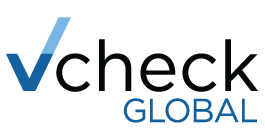
From the global pandemic to the Suez Canal blockage in March, business supply chains have endured resiliency tests over the past year unlike any in recent history. Supply chain weaknesses, plus how governments around the world responded to emergency situations, led to significant struggles for businesses in obtaining raw materials for production, purchasing products to support emergency responses, and maintaining cash flow due to product demand slowdown with capital tied up in inventory.
The fragility of supply chains is illuminated in these scenarios, and according to new research published in Supply & Demand Chain Executive, disruptions to supply chains were up 67% in 2020 compared to 2019—83% of which were caused by humans. The top two disruptive events identified in the research are factory fires and supplier firm ownership changes, and have remained the top two events for three consecutive years.
Supply chain teams around the globe were driven to create or bolster contingency plans, including searching for alternative suppliers. In stress-inducing situations like these, humans are wired to be more reactionary and therefore often use premature conclusions for the basis of sometimes critical decisions, such as selecting a third-party supplier to keep products flowing, businesses operating, and jobs intact.
A business’ supply chain is creating and subject to increasing risk, possibly now more than ever before, from suppliers in politically unstable geographies or affected by sanctions, to suppliers potentially creating environmental, social, and governance risk for the business, to pandemic-disrupted logistics, and tighter regulations and restrictions globally. While compliance teams have primarily focused on anti-bribery and anti-corruption efforts in the supply chain, the events of the past year have demonstrated the importance of combining those efforts with supply chain stability and its risks to a business’ reputation.
How can businesses ensure decisions made in high-pressure situations are well informed and ensure compliance teams identify and address supply chain risks holistically early? It starts with building a strong relationship with suppliers during the diligence process, and using the right tools at the right time makes forming that initial bond simple. These tools must be easily matched to existing workflows, leverage automation for risk screening against tens of thousands of global sources and millions of risk records to mitigate false positives, and enable enhanced due diligence with human-driven intelligence applied in deep-dive investigations of medium- to high-risk third parties.
Managing a growing third-party portfolio should not be a struggle, especially in times of economic uncertainty and knowing the fragility of supply chains. A cloud-based platform configured to a business’ unique workflows, policies, and risk tolerance, with corresponding document, data, and audit history of every compliance step taken with each third party can make the process of starting and maintaining third-party relationships easy. Vcheck RED is all of this and more, providing automated risk screening, ongoing monitoring, and the ability to quickly order and receive EDD reports all in one seamless experience. Each account on the Vcheck RED platform is powered by interconnected modules configured based on business needs, enabling compliance teams to deliver and track third-party communications including questionnaires, training certifications, and attestations.
To learn more about building supply chain resilience with Vcheck Global’s third-party risk management solution, Vcheck RED, visit https://vcheckglobal.com/third-party-risk-management.

